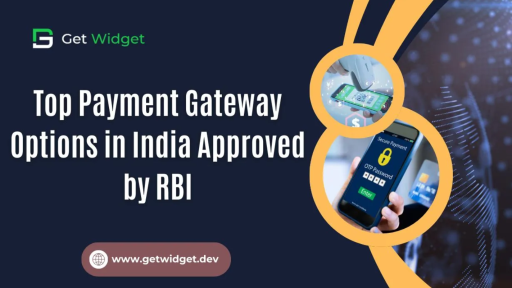Choosing the right payment gateway is crucial for any business, yet many struggle with the decision. Did you know that nearly 70% of online shoppers abandon their carts due to complicated payment processes? This article will discuss how payment gateways facilitate transactions, key factors to consider when selecting one, and steps to start receiving payments seamlessly. By the end, readers will understand how to improve cash flow, enhance scalability, and integrate mobile payment options, ultimately optimizing their brick and mortar and online operations.
Key Takeaways
- Selecting the right payment gateway enhances transaction security and customer satisfaction
- Card type acceptance is crucial for meeting diverse customer payment preferences
- Security measures are vital to protect sensitive data during transactions
- Integration with existing systems streamlines financial operations and improves user experience
- Testing the payment processing system ensures operational efficiency across all sales channels
Payment Gateways Accomplish This by Doing Three Things

Payment gateways, such as payment gateway india, achieve critical functions by streamlining transactions, which reduces the potential for chargebacks. By providing a secure platform for payment card processing, these gateways ensure that customers can make purchases with confidence, enhancing the overall purchasing experience.
Another essential function is risk management. Payment gateways utilize advanced technologies to detect fraudulent activities, safeguarding both the business and its customers. By implementing effective security measures, they minimize financial losses associated with fraudulent transactions.
Finally, payment gateways contribute to an omnichannel experience, allowing businesses to accept payments across various platforms and devices. Their integration with robust customer support systems ensures that users receive timely assistance, further fostering customer loyalty and satisfaction.
Choosing the right payment gateway is not just a detail; it can define success. Next, explore the key factors that will guide this important decision.
Factors to Consider While Choosing a Payment Gateway

Selecting the right payment gateway for a business requires careful evaluation of several key factors. Understanding the cost structure, evaluating card type acceptance, and assessing the holding time for transactions are crucial for financial planning. Additionally, businesses must consider options for multiple currencies, recurring payment capabilities, and the distinctions between hosted and non-hosted gateways. Security measures, including transport layer security, mobile payment compatibility, transaction limits, and integration with existing systems all play a vital role in enhancing customer satisfaction and ensuring compliance with the payment card industry standards.
Understanding the Cost Structure
Understanding the cost structure of a payment gateway is essential for businesses aiming to optimize their financial performance. Factors such as transaction fees, monthly fees, and potential setup costs can significantly affect the overall price and user experience. Evaluating the reputation of the gateway provider can also provide insights into hidden fees or unexpected charges, ensuring that businesses choose a service that aligns with their budget and operational needs.
Evaluating Card Type Acceptance
Evaluating card type acceptance is crucial for businesses to ensure they can meet customer payment preferences effectively. A payment gateway should support a wide array of card types, including major credit and debit cards, as well as alternative payment methods popular in specific regions. For businesses using platforms like WooCommerce or mobile apps, verifying compatibility with various card types can enhance the user experience and help reduce support ticket inquiries related to payment failures.
- Understand the importance of card type acceptance.
- Consider preferences of your target audience.
- Ensure compatibility with platforms like WooCommerce and mobile apps.
- Reduce support ticket inquiries by offering diverse payment options.
Assessing Holding Time for Transactions
Assessing the holding time for transactions is critical for businesses to maintain cash flow and operational efficiency. Delays in processing payments can lead to increased interchange fees and additional fraud risks, affecting the bottom line. Integrating a payment gateway with reliable accounting software can streamline financial tracking and provide insights into transaction timings, ensuring that businesses are well-informed for their financial planning and management.
Multiple Currency Considerations
When selecting a payment gateway, considering multiple currency capabilities is essential for businesses aiming to expand their retail footprint internationally. The right gateway should support various currencies, allowing customers to pay with credit or debit cards in their preferred currency, enhancing the overall purchasing experience. This not only fosters trust but also simplifies automation for invoicing and payment processing, enabling businesses to manage transactions effectively using a user-friendly interface while capturing customer email addresses for follow-up communications.
Recurring Payment Capabilities
Recurring payment capabilities are vital for businesses with subscription models or regular payment schedules. These features facilitate automated billing processes, reducing the need for manual invoicing and enhancing customer experience. It is essential for businesses to assess the payment processing fees associated with recurring transactions, along with the support for various currencies, to ensure seamless transactions through the chosen card reader and infrastructure.
- Understand the importance of recurring payments for subscription models.
- Assess payment processing fees related to automated billing.
- Verify support for multiple currencies to accommodate international customers.
- Consider the infrastructure and card reader compatibility for a smooth experience.
Differences Between Hosted and Non-Hosted Gateways
Hosted gateways and non-hosted gateways differ significantly in their operational models, impacting both security and customer experience. Hosted gateways direct customers to the payment provider’s server to complete transactions, often providing robust transport layer security, which can enhance safety and reduce liability for the merchant’s brand. In contrast, non-hosted gateways keep customers on the merchant’s site, offering a seamless customer service experience by allowing users to complete the transaction without redirection, thereby maintaining brand continuity.
Importance of Security Measures
Prioritizing security measures in a payment gateway is essential for mitigating risks associated with transaction processing. Implementation of strong encryption protocols safeguards sensitive customer data during payment processing, which can bolster trust and enhance customer satisfaction. Furthermore, selecting a gateway that integrates seamlessly with accounting systems and supports automated clearing house transactions can streamline financial operations, minimize potential fraud, and reduce financial losses.
Mobile Payment Compatibility
Mobile payment compatibility has become a vital consideration for businesses as they adapt to the changing landscape of payment systems. A payment gateway provider must enable transactions through popular mobile wallets and apps, ensuring ease of use for customers on various devices. Moreover, data security must be a priority; working with reputable partners and acquiring banks can help enhance trust and safeguard sensitive information during mobile transactions.
Transaction Limits and Restrictions
Transaction limits and restrictions imposed by a payment gateway can significantly affect a business’s cash flow and overall revenue. Understanding these limitations is vital, especially for businesses engaged in high-volume sales or online shopping, as exceeding these limits could lead to interrupted services or additional fees. Evaluating the gateway’s transaction limits not only helps in financial planning but also ensures seamless operations at points of sale.
- Assess transaction limits to avoid interruptions in service.
- Consider how restrictions may affect cash flow and revenue.
- Evaluate potential fees associated with exceeding limits.
- Ensure compatibility with high-volume sales scenarios.
Exploring Integration With Existing Systems
Integrating a payment gateway with existing systems is essential for streamlining operations and enhancing customer experience. A well-connected payment processor ensures timely updates to invoices and provides a seamless transition from cart to payment, allowing businesses to manage sales efficiently. By selecting a gateway that easily interfaces with the current merchant account, companies can optimize cash flow and minimize disruptions in their transactional processes.
Once you’ve weighed the important factors, the next step is clear. It’s time to learn how to set yourself up to receive payments and keep your business moving forward.
How Do You Start Receiving Payments?

To start receiving payments effectively, businesses need to first select a reliable payment gateway that integrates well with their existing systems. This choice influences how transactions will process, especially on platforms like Magento or for those offering software as a service (SaaS) solutions. The selected gateway should also support a variety of payment methods, including digital wallets, to meet diverse customer preferences.
Next, businesses must ensure that the payment gateway provides secure authentication protocols. This step is vital for protecting sensitive data and building customer trust. Investors should confirm that the chosen gateway is compliant with industry standards, further enhancing security for transactions made via mobile devices and online platforms.
Finally, businesses should test their payment processing system to ensure it operates smoothly across all channels. This includes verifying the integration with their website and customer management systems. Regularly reviewing and updating the payment gateway will also help to maintain operational efficiency while meeting evolving consumer needs:
- Select a reliable payment gateway that integrates with existing systems.
- Ensure secure authentication protocols are in place.
- Test the payment processing system for operational efficiency.
Conclusion
Choosing the right payment gateway is essential for optimizing transaction efficiency and enhancing customer trust. Businesses must carefully evaluate factors such as cost structure, card type acceptance, and security measures to ensure a seamless experience. By understanding these critical elements, companies can effectively meet customer preferences and support financial planning. Investing time in this selection process ultimately leads to improved cash flow, reduced fraud risks, and increased customer satisfaction.





